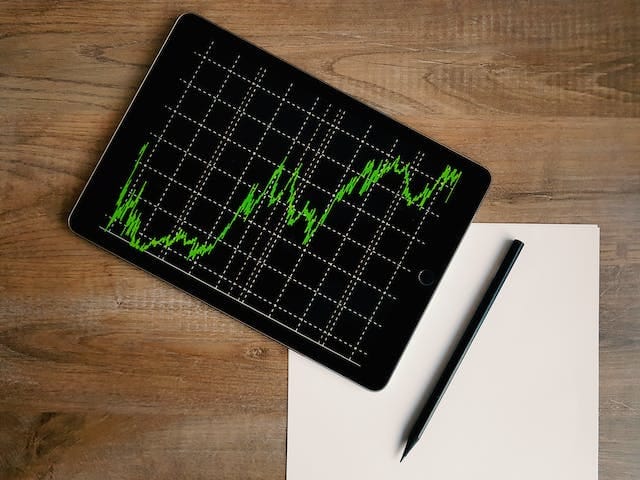Mastering the Forex Trading Basics: A Beginner's Guide
Master the basics of Forex Trading with a beginner's guide. Explore insights, foundational concepts, and step-by-step explanations for a solid understanding of Forex.

As someone who is new to the world of forex trading, understanding the basics is crucial for success in this fast-paced and dynamic market. In this beginner's guide, I will walk you through the essential forex trading basics, from currency trading strategies to risk management and leveraging. By the end of this guide, you will have a solid foundation to start your journey in the forex market with confidence.
Understanding Forex Trading Basics
Forex trading, also known as foreign exchange trading, involves the buying and selling of currencies in the global market. The forex market is the largest and most liquid financial market in the world, with a daily trading volume exceeding $6 trillion. Understanding the basics of forex trading begins with grasping the concept of currency pairs, where one currency is exchanged for another at an agreed exchange rate.

As a beginner, it's important to familiarize yourself with the major currency pairs, such as EUR/USD, USD/JPY, and GBP/USD, as they are the most actively traded pairs in the forex market. Additionally, gaining knowledge of the bid and ask prices, as well as the spread, will provide you with a fundamental understanding of how currency prices are quoted and how brokers make a profit.
When starting out in forex trading, it's essential to develop a sound currency trading strategy that aligns with your risk tolerance and financial goals. Whether you prefer day trading, swing trading, or long-term investing, having a well-defined strategy will guide your trading decisions and help you navigate the complexities of the forex market.
Currency Trading Strategies for Beginners
As a beginner in forex trading, it's crucial to start with a solid foundation in currency trading strategies. One popular strategy is trend trading, where traders capitalize on the directional movement of currency pairs over time. By identifying and following the trend, traders aim to ride the momentum and capture profitable opportunities.
Another strategy to consider is range trading, which involves identifying and trading within established price ranges. This approach requires patience and discipline to buy at the bottom of the range and sell at the top, making it suitable for traders who prefer a more conservative trading style.
For those interested in short-term trading, scalping can be an attractive strategy, where traders aim to profit from small price movements by executing a large number of trades within a day. Scalping requires quick decision-making and a deep understanding of market dynamics, making it suitable for traders with a high tolerance for risk.
Analyzing the Forex Market
Analyzing the forex market is a fundamental aspect of successful trading. Whether you are a technical analyst or a fundamental analyst, understanding market trends, economic indicators, and geopolitical events is essential for making informed trading decisions.
Technical analysis involves studying historical price data, chart patterns, and technical indicators to forecast future price movements. By identifying trends, support and resistance levels, and key reversal patterns, technical analysts can gain insights into potential entry and exit points for their trades.
On the other hand, fundamental analysis focuses on evaluating economic data, central bank policies, and geopolitical events to assess the intrinsic value of currencies. By staying informed about interest rate decisions, GDP reports, and geopolitical tensions, fundamental analysts can anticipate market reactions and adjust their trading strategies accordingly.
Exploring Forex Trading Platforms
In the digital age, forex trading platforms play a pivotal role in providing traders with access to the global currency market. When exploring forex trading platforms as a beginner, it's essential to consider factors such as reliability, user interface, charting tools, and order execution speed.
MetaTrader 4 (MT4) and MetaTrader 5 (MT5) are popular choices among forex traders due to their robust features, including customizable charts, technical indicators, and automated trading capabilities through expert advisors (EAs). These platforms offer a seamless trading experience for beginners and experienced traders alike.
Beyond the traditional desktop platforms, mobile trading apps have become increasingly popular, allowing traders to monitor the market, place trades, and manage their positions on the go. With the advancement of mobile technology, traders can stay connected to the forex market at all times, ensuring they never miss out on trading opportunities.
Mastering Currency Pairs Trading
Mastering the art of currency pairs trading is essential for navigating the forex market with confidence. Each currency pair has its unique characteristics, volatility, and correlation with other pairs, making it important for traders to conduct thorough analysis before entering a trade.

When trading currency pairs, it's crucial to consider the impact of major economic events and news releases on currency prices. For example, the release of non-farm payroll (NFP) data in the United States can significantly impact the value of the US dollar, leading to volatility in currency pairs involving the USD.
Understanding the correlation between currency pairs is also vital, as certain pairs exhibit strong positive or negative correlations due to underlying economic factors. By diversifying your trades across positively correlated pairs or hedging positions with negatively correlated pairs, you can manage risk and optimize your trading portfolio.
Forex Technical Analysis Fundamentals
Mastering the fundamentals of forex technical analysis is indispensable for traders looking to gain a competitive edge in the market. Technical analysis involves the use of various tools and techniques to interpret price charts and identify potential trade opportunities.
Chart patterns, such as head and shoulders, triangles, and double tops, provide valuable insights into potential trend reversals or continuations. By recognizing these patterns, traders can make informed decisions on when to enter or exit trades, maximizing their profit potential.
In addition to chart patterns, technical indicators, such as moving averages, relative strength index (RSI), and stochastic oscillators, offer valuable signals for identifying overbought or oversold conditions in the market. By combining multiple indicators and confirming signals, traders can enhance their trading strategies and minimize the impact of false signals.
Implementing Risk Management in Forex Trading
Effective risk management is a cornerstone of successful forex trading, especially for beginners. Implementing risk management techniques helps traders preserve their capital and navigate the inherent volatility of the forex market.
One essential risk management tool is setting stop-loss orders to limit potential losses on trades. By defining a predetermined level at which to exit a losing trade, traders can protect their capital from significant drawdowns and emotional decision-making.
Furthermore, position sizing plays a critical role in risk management, as it determines the amount of capital to allocate to each trade based on the level of risk. By adhering to a consistent position sizing strategy and avoiding overleveraging, traders can mitigate the impact of losing trades and maintain a sustainable approach to trading.
Leveraging in Forex Trading: Dos and Don'ts
Leverage, a double-edged sword in forex trading, amplifies both potential profits and losses. As a beginner, understanding the dos and don'ts of leveraging is crucial for responsible trading practices.
While leverage provides traders with the opportunity to control larger positions with a smaller amount of capital, it also magnifies the impact of market fluctuations. Therefore, it's important to use leverage prudently and avoid excessive leverage that can lead to margin calls and account liquidation.
A common practice among experienced traders is to maintain a conservative leverage ratio, such as 1:10 or 1:20, to minimize the risk of overexposure. By exercising caution and utilizing leverage as a strategic tool rather than a means for aggressive trading, beginners can safeguard their trading accounts and maintain long-term sustainability.
Utilizing Forex Trading Signals
Forex trading signals serve as valuable indicators of potential trade opportunities, providing traders with actionable insights based on technical or fundamental analysis. As a beginner, leveraging forex trading signals can offer guidance and confidence in your trading decisions.
There are various sources of forex trading signals, including signal providers, expert advisors, and trading forums. When evaluating trading signals, it's essential to assess the track record and reliability of the signal provider, as well as the compatibility of the signals with your trading strategy and risk tolerance.
While forex trading signals can be a valuable resource, it's important for traders to exercise discernment and not rely solely on signals for their trading decisions. By combining signals with your own analysis and market research, you can develop a well-rounded approach to trading and enhance your overall trading performance.
Essential Forex Trading Tools and Resources
In the fast-paced world of forex trading, having access to essential tools and resources is paramount for staying informed and making informed trading decisions. As a beginner, familiarizing yourself with these tools can significantly enhance your trading experience and performance.
Charting platforms, such as Trading View and Forex Factory, offer comprehensive charting tools, technical indicators, and real-time market data for conducting in-depth analysis and monitoring price movements. These platforms provide valuable insights into market trends and potential trade setups, empowering traders to make informed decisions.
Moreover, economic calendars, such as the one provided by Investing.com, are indispensable for tracking upcoming economic events, central bank announcements, and key economic indicators. By staying informed about scheduled events that can impact currency prices, traders can adjust their trading strategies and manage their risk effectively.
In conclusion, mastering the forex trading basics is a fundamental step for beginners looking to embark on their trading journey. By understanding currency trading strategies, analyzing the forex market, exploring trading platforms, mastering currency pairs trading, and leveraging essential trading tools, beginners can build a strong foundation for long-term success in the dynamic world of forex trading.
Conclusion
I hope this beginner's guide has provided you with valuable insights into the forex trading basics and equipped you with the knowledge to navigate the forex market with confidence. As you continue your journey in forex trading, remember to prioritize continuous learning, discipline, and risk management to achieve sustainable and profitable trading outcomes.
With the right mindset and dedication, mastering the forex trading basics is well within your reach. Whether you are a part-time trader or aspiring to make forex trading your full-time career, the principles outlined in this guide will serve as a solid foundation for your trading endeavors. Embrace the challenges, stay resilient in the face of setbacks, and let your passion for forex trading propel you towards achieving your financial goals.
CTA: Now that you have gained valuable insights into forex trading basics, take the next step by opening a demo account with a reputable forex broker and applying your knowledge in a risk-free trading environment. Remember, practice, patience, and perseverance are the keys to mastering forex trading. Good luck on your trading journey!




